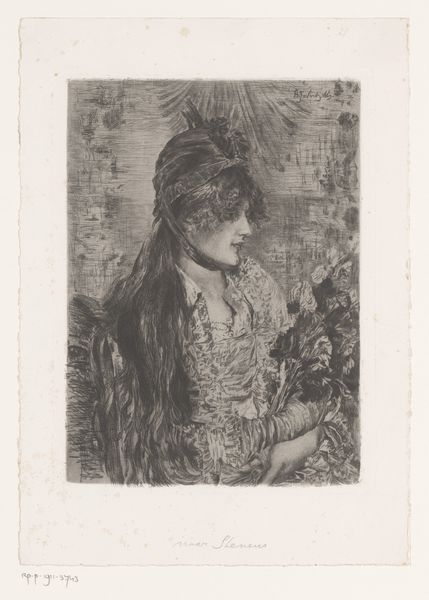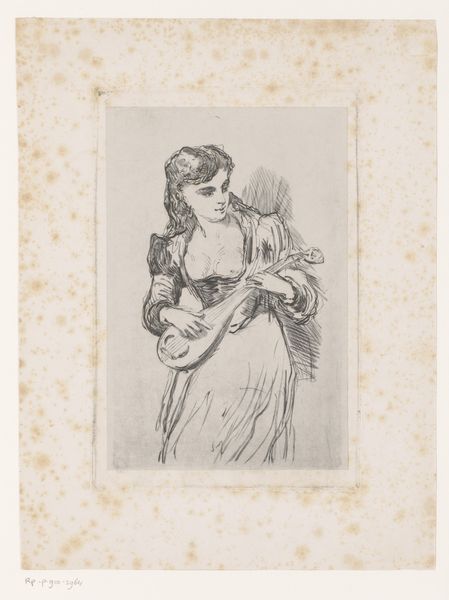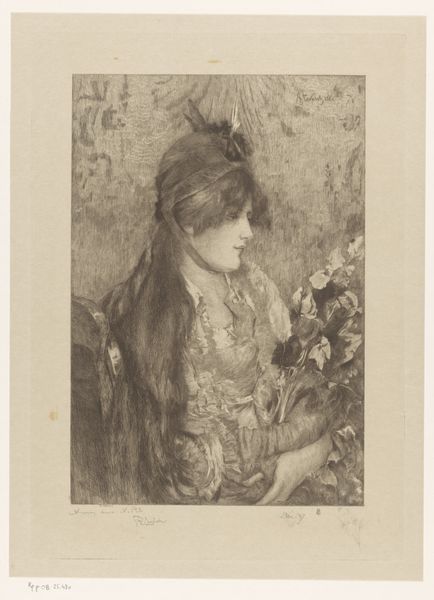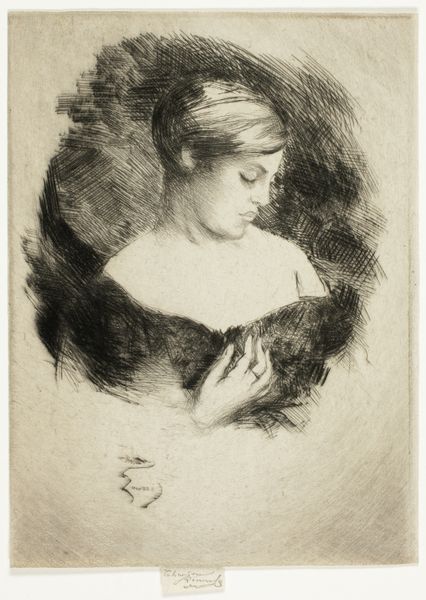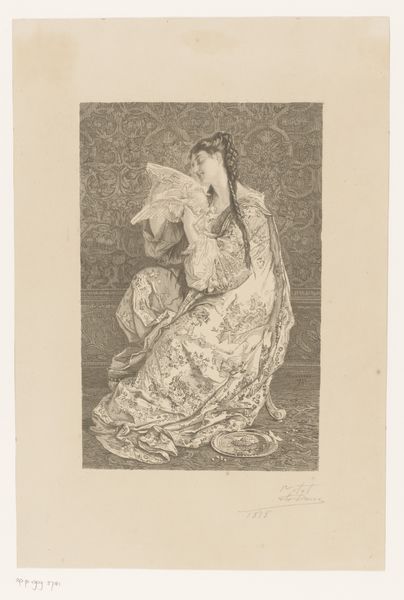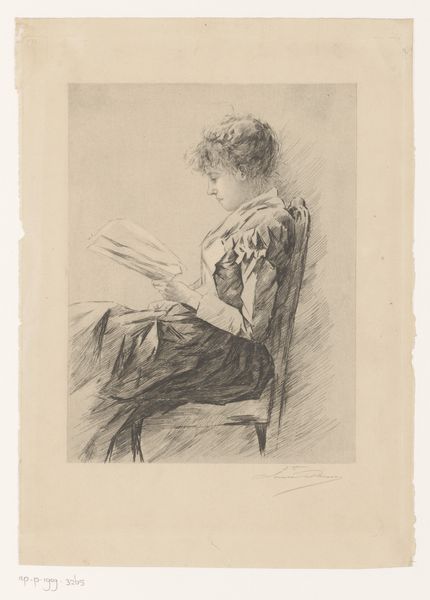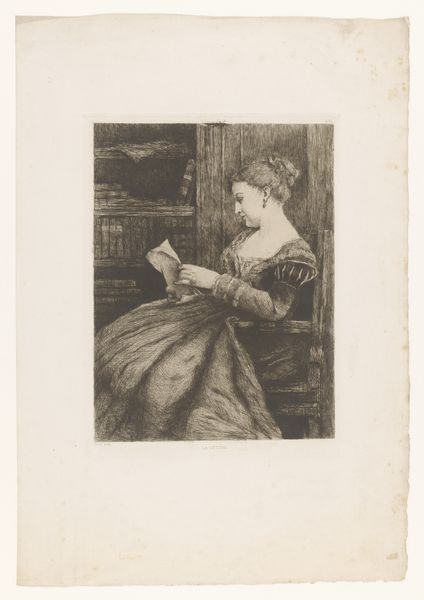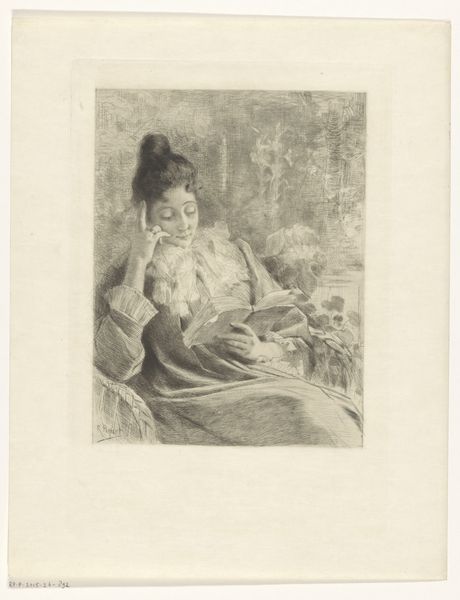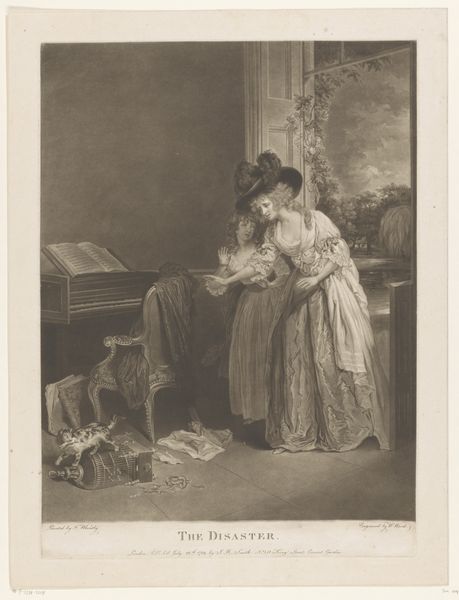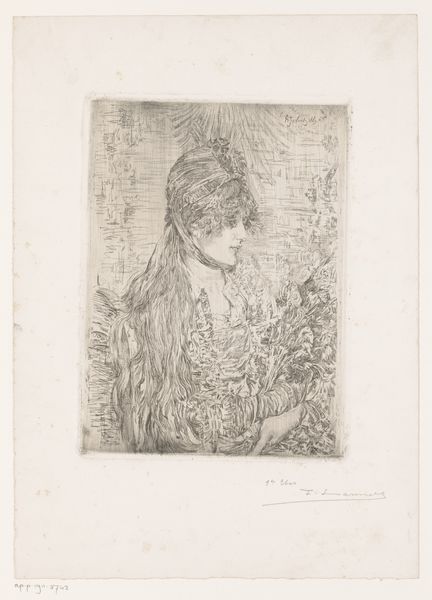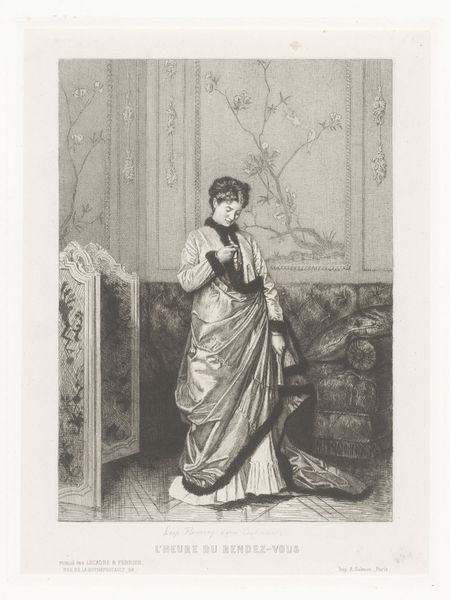
#
portrait
# print
#
caricature
#
genre-painting
#
academic-art
Dimensions: height 572 mm, width 407 mm
Copyright: Rijks Museum: Open Domain
Curator: Here at the Rijksmuseum, we're standing before a print titled "Vrouw geeft jonge vogels te eten," which translates to "Woman Feeding Young Birds," also known as “The Foster Mother”. Its creation is dated to sometime between 1874 and 1879, by the artist Charles Roberts. A fairly unassuming title for an image with such tenderness, don’t you think? Editor: Tenderness is certainly the first thing that strikes me. It's conveyed in the woman's bowed head and in the very gentle way she holds the nest of tiny birds, all huddled together waiting for their food. It has a soft, dreamy quality that contrasts starkly with the more rigid social portraits of the era. Curator: Precisely. It speaks to a powerful cultural archetype – that of maternal care. Birds, historically and across cultures, have represented the soul, freedom, and transformation. This young woman nurturing these birds evokes not just literal sustenance but almost a spiritual one. The image offers up universal emotions associated with looking after new life. Editor: And the choice of a print – readily reproducible – suggests the artist, or the institution commissioning the work, desired this image to be widely disseminated, likely into bourgeois households. This kind of accessible imagery reinforces ideals around femininity and domesticity, softly guiding social norms of the period. What could be more sentimental than portraying women's virtue reflected onto innocent vulnerable animals? Curator: It’s clever, that mirroring effect. The composition centers on a young woman and nestlings, which allows us to consider ideas of nature, domesticity, vulnerability, innocence – and consider her almost Eden-like nurturing, a harmony reflected in her peaceful downward gaze. Do you get any particular impression from her face? Editor: Her downcast eyes obscure any sense of agency; she exists solely within this maternal moment. She doesn't seem to acknowledge any larger world, a telling visual signifier. It all serves to solidify the conventional narrative around feminine roles in 19th-century society. And of course, this print aesthetic – precise and polished – added an air of respectable middle-class decorum. Curator: Your view is so precise. It makes me contemplate not just her gesture, but the future she shapes, by nurturing new beings – in their delicate dependence, and promising of flourishing and flight, if well guided. We have here two very distinct notions – on the one hand, the maternal embrace; on the other, freedom. The composition makes you wonder which the mother intends more? Editor: Fascinating. I came expecting sweetness and innocence, and instead encountered so much loaded meaning beneath its demure surface. Curator: A common effect of deep contemplation on artistic emblems! And now we welcome the chance for you to contemplate this piece more fully in your own light.
Comments
No comments
Be the first to comment and join the conversation on the ultimate creative platform.
